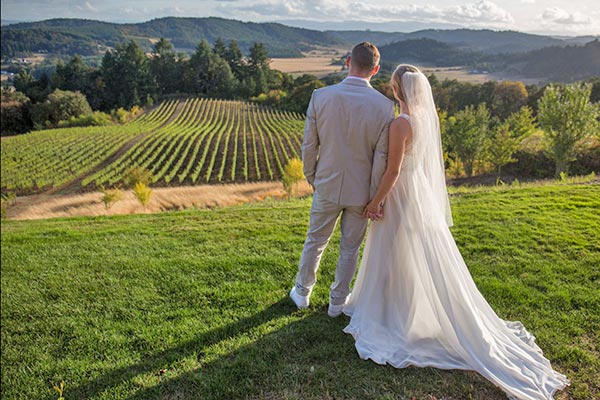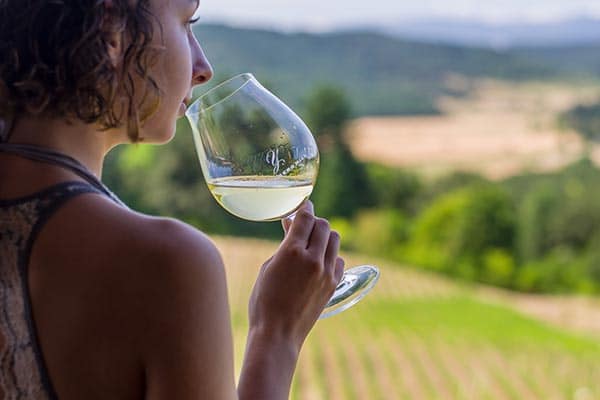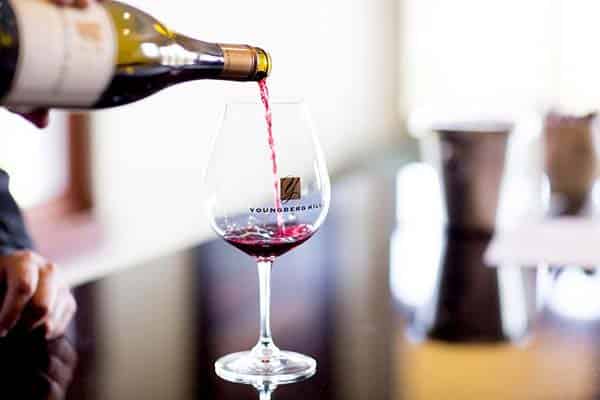 We have all heard that wine tasting is a complicated process. You have probably been given advice on how to taste wine – usually this includes:
We have all heard that wine tasting is a complicated process. You have probably been given advice on how to taste wine – usually this includes:
a) Look at the color of the wine to discover its clarity, depth, and saturation.
b) Smell the wine
c) Swirl the wine in your glass.
d) Note how slowly it runs back down the side of the glass while you’re swirling. This is called viscosity.
e) Smell the wine again.
f) Take a sip of the wine and roll it around your mouth so as to expose it to all of your taste buds.
g) Note the aftertaste.
There can be more steps involved for the professional wine taster, but those are the basics.
However, when going wine tasting, the most important thing to note is what we like to call the “yuck” or “yum” factor. That is: do you like it? If so, what do you like about it? If not, what don’t you like about it?
The first part is easy. Just taste the wine and discover if you enjoy the texture, smell, and flavor.
The second part is more difficult. Discovering what you specifically like or dislike about the wine can be tough to describe. Taste is a deeply personal experience and how one person describes a taste can be completely different from the description of another person who is sipping the exact same wine.
So, how do you describe your taste in wine to a store, restaurant, or winery? Here are four tips:
- When you taste a wine you like – find out how the winery described it. You can do this in the tasting room by speaking with the person who is conducting the tasting and asking them for tasting notes, discussing specifics of the year the wine was produced, and finding out how it was aged.However, you aren’t always in a tasting room when sipping a glass of wine. You may be at home or out at dinner. You can check the bottle for descriptions or note down the wine you ordered and Google the tasting notes later on.
- When you taste a wine you don’t like, do the same thing. No one really wants to remember the wine they didn’t care for, but understanding why you didn’t care for it will help you buy wines you enjoy more in future. So, find out about the wine, discover how the taste or smell you didn’t care for is described, and don’t buy wine with those characteristics in future.
- Consider what it’s paired with. The way you perceive taste changes as you eat and drink wine. You might be enjoying your food and wine more than you would if they were not paired. On the flip side, you may really dislike your wine because of a bad pairing.
- Find out what certain descriptive terms mean. Some very common terms used when discussing wine are:
Rich – Wine which shows ripeness and viscosity. This is something you can discern from the legs which form when you swirl your wine and from the depth of color.
High Acidity – This describes a tart and zesty taste. When describing reds; “high acidity” usually means it’s lighter in color and tastes tart. When describing whites; this often means a lemon or lime taste.
Oaked – This means the wine was aged in an oak barrel. The type of oak used in the barrel itself can have a huge impact on the taste of wine. But, when you’re talking tastebuds, the “oak” tastes in wine are the non-grape related tastes. Common “oak” tastes are vanilla, butter, and coconut in whites and spice, vanilla, and dill in reds.
UnOaked – Wines are not always aged in oak. Wines which are unoaked are often more zesty and tart.
Buttery – Often describes a white that has been aged in oak and has low acidity. It has a creamy texture and a smooth finish.
Floral – A smell or taste of flowers or blossoms. This is opposed to a fruity taste or smell.
We could go on and on talking about terms used to describe wine, but these are some of the basics.
Just remember, when tasting wine, it’s all about your very personal taste. Be sure to keep that in mind when you next go out for a wine tasting or sip on a glass of wine at a restaurant.
What are your personal wine tastes? COMMENT below and share with us…









